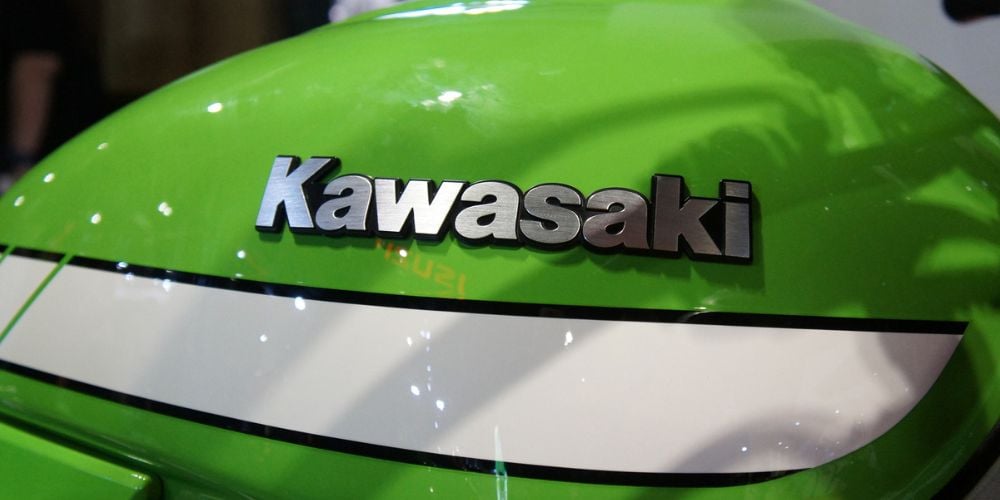Kawasaki Heavy Industries Ltd., commonly known as Kawasaki, is a renowned Japanese company that holds a significant position in the industrial and motorcycle sectors.
But, do you know who owns Kawasaki?
As we delve into the ownership structure of this automotive giant, we uncover fascinating insights into the key players, shareholders, and decision-makers who hold the reins of this influential company.
The History of Kawasaki
Shozo Kawasaki: Founder and Early Beginnings
Kawasaki traces its roots back to Shozo Kawasaki, a visionary founder who laid the foundation of the company in 1878.
Shozo Kawasaki started as a shipbuilder and quickly expanded into various industries, which ultimately included aerospace, rolling stock, motorcycles, and heavy machinery.
With a relentless pursuit of excellence and innovation, Shozo Kawasaki set the path for the company’s growth during its early years.

Growth and Expansion Over the Years
Over time, Kawasaki experienced remarkable growth and emerged as a major player in industry. The company’s commitment to quality, technological advancement, and diverse product offerings played a key role in its growth journey.
From its humble beginnings as a shipyard, Kawasaki diversified into various sectors, including energy systems, industrial equipment, robotics, and motorcycles, solidifying its position as a global conglomerate.
Kawasaki Heavy Industries
Kawasaki Heavy Industries (KHI), a subsidiary of the company, operates as a major heavy industrial manufacturer in Japan, with a diverse range of products and divisions.
KHI is involved in the construction of ships, aircraft, rolling stock, gas turbines, and industrial machinery. With a strong focus on advanced technologies and engineering capabilities, KHI has become synonymous with innovation and reliability in the heavy industries sector.
Shōzō Kawasaki’s entrepreneurial spirit and innovative mindset continue to shape the company’s vision and drive its success.
Kawasaki Motorcycles
Kawasaki Motorcycles, closely associated with Kawasaki Heavy Industries, has established its own legacy in the motorcycle industry. The brand’s commitment to cutting-edge technology, superior performance, and distinctive design has garnered a loyal customer base worldwide.
Kawasaki motorcycles come in a wide range of models, from sport bikes to off-road motorcycles, catering to the diverse needs and preferences of riders.
With a continuous focus on engineering excellence and an excellent racing pedigree, Kawasaki motorcycles have made significant contributions to the industry, winning numerous championships and accolades. Their popularity among riders is a testament to their quality, reliability, and thrilling riding experience.
To understand who owns Kawasaki, examining its shareholding structure is crucial. The shareholding pattern of Kawasaki reveals the key players and their respective stakes in the company.
Institutional investors, including financial institutions and mutual funds, also play a vital role in shaping Kawasaki’s ownership landscape.
These shareholders often have a long-term perspective and actively engage in strategic decision-making processes.
Additionally, alliances and partnerships with other companies, both domestic and international, further contribute to the company’s growth and stability in the market.
Key Players and Stakeholders
Yoshinori Kanehana: CEO of Kawasaki
As of 2024, Yoshinori Kanehana serves as the Chief Executive Officer (CEO) of Kawasaki. Kanehana brings a wealth of experience and leadership to the company, guiding its strategic direction and overseeing its operations.
With a focus on innovation and customer satisfaction, Kanehana plays a pivotal role in driving Kawasaki’s success.
Board of Directors
The Board of Directors forms the governing body of Kawasaki, responsible for making key strategic decisions and ensuring the company’s long-term growth.
The board comprises individuals with diverse expertise and industry knowledge, providing effective oversight and guidance. These directors bring their skills and experience to the table, contributing to the company’s overall success.
Employees
Kawasaki’s employees are a crucial component of the company’s success. The dedicated workforce of engineers, technicians, designers, and support staff contributes to the development, production, and distribution of Kawasaki’s products and services.
With a strong commitment to quality, professionalism, and teamwork, these employees are the backbone of the company, driving its growth and maintaining its position in the market.

Kawasaki’s Impact on the Market
Kawasaki holds a prominent position in the market and exerts significant influence. In the motorcycle industry, Kawasaki competes with other major players, such as Honda, Yamaha, and Suzuki.
Despite strong competition, Kawasaki has managed to establish a sizable market share, thanks to its reputation for high-performance motorcycles and cutting-edge technology.
Kawasaki’s impact extends beyond motorcycles to its various industrial divisions. Kawasaki Heavy Industries’ contributions to aerospace, rolling stock, and energy systems have made it a trusted partner for both domestic and international clients.
The company’s global presence and expansion strategies have played a crucial role in solidifying its foothold in various regions around the world. Kawasaki’s products and services are used in numerous industries, benefiting sectors such as transportation, energy, and manufacturing.
Frequently Asked Questions
Who is the CEO of Kawasaki?
The current CEO of Kawasaki is Yoshinori Kanehana.
What is the market cap of Kawasaki?
As of 2024, the market cap of Kawasaki is estimated to be $3.69 billion.
Is Kawasaki a publicly traded company?
Yes, Kawasaki is a publicly traded company. Its stocks are listed on the Tokyo Stock Exchange. Investors can buy and sell shares of Kawasaki on the open market.
When was Kawasaki founded?
Kawasaki was founded in 1878 by Shozo Kawasaki.
How many Kawasaki motorcycles are sold annually?
The annual sales figures of Kawasaki motorcycles vary each year. However, Kawasaki consistently ranks high in terms of worldwide motorcycle sales, with millions of bikes sold annually.
Conclusion
The ownership structure of Kawasaki provides insights into the individuals and institutions that drive the company’s success.
As we explored the history of Kawasaki, the notable presence of Kawasaki Heavy Industries and the brand’s impact on the motorcycle market became evident.
With a diverse range of products and divisions, Kawasaki has established itself as a global conglomerate, admired for its commitment to technological advancement and engineering excellence.
By understanding the shareholding structure and the key players involved, we gain a deeper appreciation for the significance of Kawasaki and its continued growth.
Looking ahead, Kawasaki promises to maintain its position as a powerhouse in the industrial and motorcycle sectors, captivating riders with its innovative offerings and high-performance motorcycles.
As the company continues to evolve, its ownership structure will play a pivotal role in shaping its future endeavors.


 Tags:
Tags:










